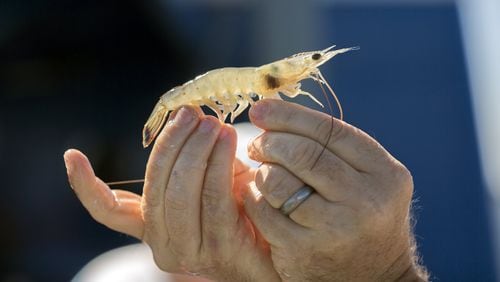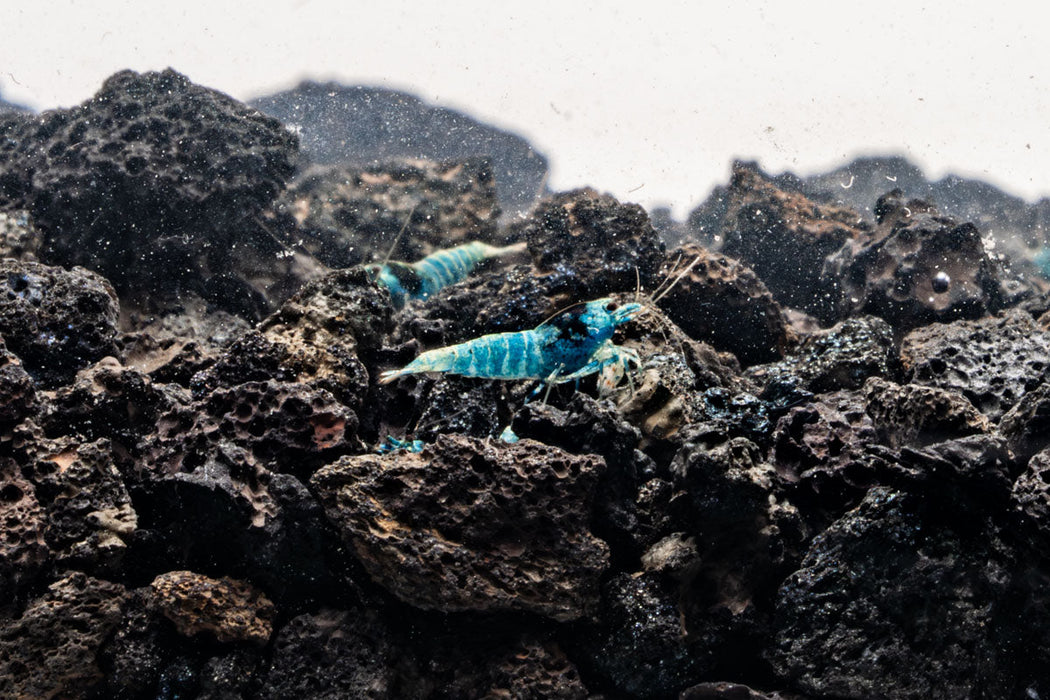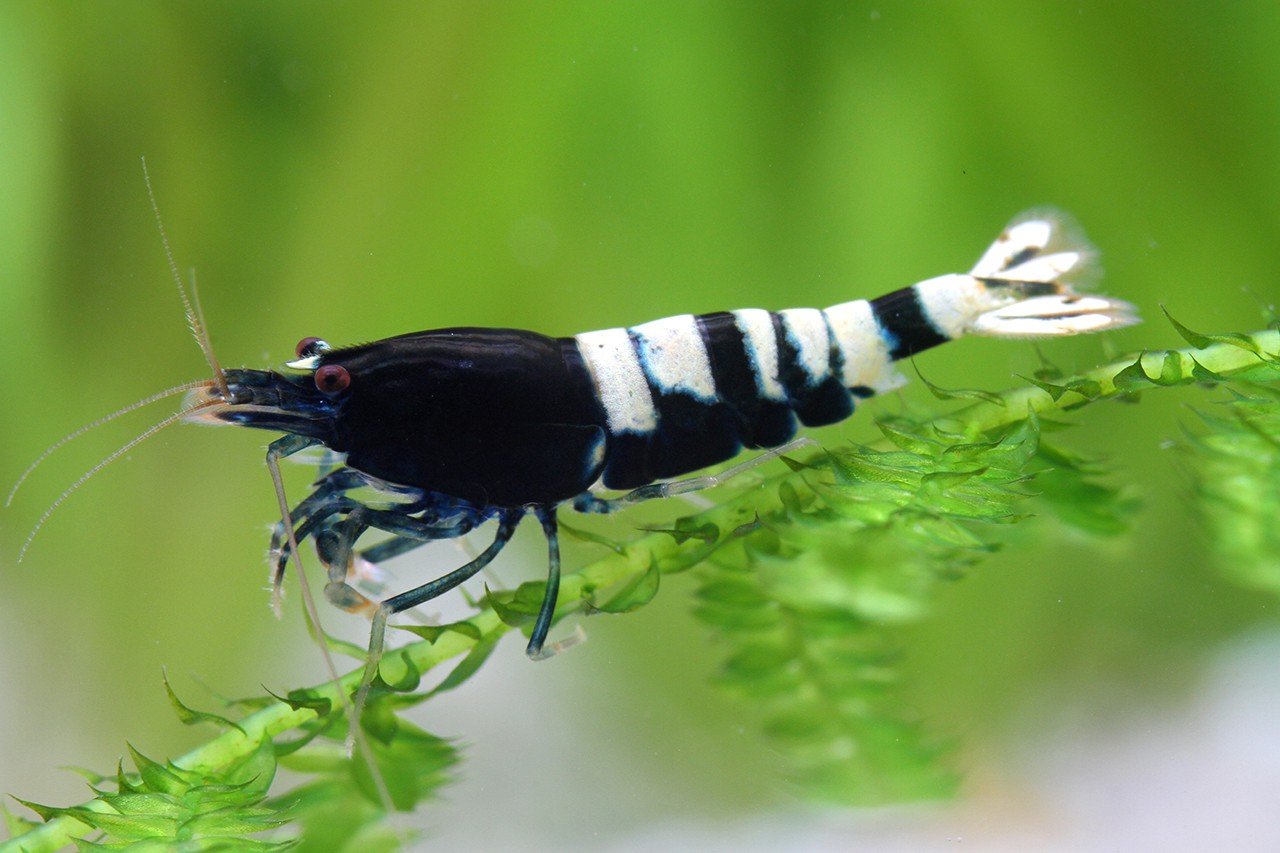Black Shadow Shrimp commonly face health problems like bacterial infections and poor water quality. Maintaining optimal water conditions is crucial for their well-being.
Black Shadow Shrimp are popular in aquariums due to their striking appearance and active behavior. These freshwater shrimp are sensitive to their environment, making them susceptible to various health issues. Common problems include bacterial infections, parasitic infestations, and stress due to poor water conditions.
Maintaining a clean tank with stable water parameters helps prevent many of these issues. Regular monitoring of ammonia, nitrite, and nitrate levels is essential. A balanced diet also plays a significant role in their health. By addressing these factors, you can ensure a healthy environment for your Black Shadow Shrimp, leading to a thriving and vibrant aquarium.
Common Health Issues
Black Shadow Shrimp are stunning additions to any aquarium. Ensuring their health is crucial. Let’s explore some common health issues they face. Understanding these issues can help maintain their well-being.
Parasitic Infections
Parasitic infections are a major concern for Black Shadow Shrimp. These parasites can cause severe health problems. Common symptoms include:
- White spots on the body
- Loss of appetite
- Erratic swimming
To treat parasitic infections, consider using anti-parasitic medications. Isolating the infected shrimp can prevent the spread. Regular water changes can also help keep parasites at bay.
Bacterial Diseases
Bacterial diseases can cause significant harm to your shrimp. Common signs include:
- Red or inflamed gills
- White or cloudy eyes
- Fuzzy growths on the shell
To combat bacterial infections, maintain optimal water quality. Use antibacterial treatments if necessary. Quarantining new shrimp can also help prevent outbreaks.
| Health Issue | Symptoms | Treatment |
|---|---|---|
| Parasitic Infections | White spots, loss of appetite, erratic swimming | Anti-parasitic medications, isolation, water changes |
| Bacterial Diseases | Red gills, cloudy eyes, fuzzy growths | Optimal water quality, antibacterial treatments, quarantine |
Recognizing Symptoms
Black Shadow Shrimp are popular pets. Recognizing their health problems early is crucial. Symptoms can be behavioral or physical. Knowing these signs helps prevent severe issues.
Behavioral Changes
Behavioral changes are the first signs of health issues. Healthy shrimp are active and responsive. Watch for these changes:
- Reduced Activity: Shrimp may become sluggish.
- Hiding More: They hide more than usual.
- Loss of Appetite: They stop eating regularly.
- Erratic Swimming: They swim in circles or erratically.
These changes indicate stress or illness. Monitoring behavior helps catch problems early.
Physical Indicators
Physical indicators are clear signs of illness. Look for these symptoms:
| Indicator | Description |
|---|---|
| Discoloration | Black Shadow Shrimp might change color. Pale or dark spots are warning signs. |
| Fungal Growth | White or fuzzy patches on the body indicate fungal infections. |
| Shell Damage | Cracked or broken shells suggest physical harm or poor water quality. |
| Swollen Abdomen | A swollen abdomen can indicate internal issues. |
Regularly inspect your shrimp for these signs. Early detection leads to better treatment outcomes.
Water Quality Management
Maintaining optimal water quality is crucial for the health of Black Shadow Shrimp. Poor water conditions can lead to stress and diseases. This section covers essential aspects of water quality management.
Optimal Ph Levels
Black Shadow Shrimp thrive in slightly acidic to neutral water. The ideal pH range is between 6.5 and 7.5. Regularly test the water to ensure pH levels are stable.
- Use a reliable pH test kit.
- Adjust pH gradually to avoid shocking the shrimp.
Avoid sudden changes in pH as it can be harmful. Maintaining stable pH levels helps in promoting good health.
Temperature Control
Temperature plays a vital role in shrimp health. The optimal temperature range is between 72°F and 78°F (22°C to 25.5°C).
| Temperature (°F) | Effect |
|---|---|
| Below 72°F | Slows metabolism and growth. |
| Above 78°F | Increases stress and disease risk. |
Use a heater to maintain a constant temperature. Monitor the water temperature daily with a reliable thermometer.
- Avoid direct sunlight on the tank.
- Ensure good ventilation around the tank.
Stable temperatures help in reducing stress and promoting good health in Black Shadow Shrimp.

Credit: www.ajc.com
Dietary Considerations
Proper diet is crucial for the health of Black Shadow Shrimp. A balanced diet ensures they thrive and remain healthy. Poor nutrition leads to several health issues, including weakened immunity and poor coloration.
Balanced Nutrition
Black Shadow Shrimp need a balanced diet to stay healthy. Their diet should include:
- High-quality shrimp pellets
- Fresh vegetables like spinach and zucchini
- Algae wafers
Avoid overfeeding to prevent water contamination. Overfeeding can cause bacterial blooms, harming the shrimp. Provide small, frequent meals.
Supplemental Feeding
Supplemental feeding is essential for Black Shadow Shrimp. It ensures they get all necessary nutrients. Consider adding:
- Calcium supplements for strong exoskeletons
- Protein-rich foods like bloodworms
- Blanched vegetables for fiber
Calcium supplements are critical for molting. Without enough calcium, shrimp struggle to molt properly. Protein helps with growth and color enhancement. Blanched vegetables provide essential fiber.
Monitor their diet closely. Adjust the feeding schedule based on their health and activity levels.
Preventive Measures
Black Shadow Shrimp are delicate and prone to various health problems. Taking preventive measures can greatly improve their chances of staying healthy. Here are some essential steps you can take to ensure your shrimp thrive.
Quarantine Procedures
Always quarantine new shrimp before adding them to the main tank. This helps in preventing the spread of diseases. Set up a separate quarantine tank with similar water conditions as your main tank. Keep the new shrimp in this tank for at least two weeks. Observe them closely for any signs of illness or unusual behavior.
| Step | Action |
|---|---|
| 1 | Set up a quarantine tank |
| 2 | Match water conditions |
| 3 | Quarantine for two weeks |
| 4 | Monitor for diseases |
Regular Health Checks
Conduct regular health checks to catch problems early. Inspect your shrimp at least once a week. Look for signs of stress, such as lethargy or unusual swimming patterns. Check their color and shell condition. Healthy shrimp should have a vibrant color and a smooth shell.
- Inspect shrimp weekly
- Look for signs of stress
- Check color and shell condition
Use a magnifying glass if needed. Early detection can save your shrimp from severe health issues.
Effective Treatment Options
Black Shadow Shrimp are fascinating creatures that can face health issues. Knowing effective treatment options is crucial for their well-being. This section covers both medication use and natural remedies to help your shrimp thrive.
Medication Use
Using medication can be a quick way to treat shrimp health issues. Below is a table with common medications and their uses:
| Medication | Use |
|---|---|
| Antibiotics | Treats bacterial infections |
| Anti-fungal agents | Combats fungal infections |
| Anti-parasitic drugs | Eliminates parasites |
Follow these steps for effective medication use:
- Identify the health problem.
- Choose the correct medication.
- Follow dosage instructions.
- Monitor your shrimp closely.
Natural Remedies
Natural remedies can be less stressful for your shrimp. Consider these options:
- Garlic: Boosts the immune system.
- Indian Almond Leaves: Have antibacterial properties.
- Salt Baths: Effective for treating mild infections.
Using natural remedies involves simple steps:
- Prepare the remedy.
- Add it to the shrimp tank.
- Observe the shrimp for any changes.
Both medication and natural remedies have their pros and cons. Choose the best option based on the specific health issue and your shrimp’s needs.
Stress Reduction Techniques
Black Shadow Shrimp are sensitive creatures. Stress can cause health problems. Reducing stress is crucial for their well-being. This section outlines effective techniques. These methods help maintain a stress-free environment.
Tank Environment
Creating a suitable tank environment is essential. Start with the right tank size. A large tank gives them space to roam. Ensure the water parameters are stable. Use a good filter to keep the water clean.
Maintain a consistent water temperature. Sudden temperature changes can stress shrimp. Add live plants for hiding spots. Plants help reduce stress levels. Use smooth gravel to avoid injuries.
| Parameter | Ideal Range |
|---|---|
| Temperature | 22-26°C (72-79°F) |
| pH Level | 6.5-7.5 |
| Ammonia | 0 ppm |
| Nitrite | 0 ppm |
| Nitrate | < 20 ppm |
Keep the tank quiet. Loud noises can scare them. Use a gentle light source. Bright lights can stress them.
Minimizing Handling
Frequent handling can stress shrimp. Limit physical contact. Use tools to move them if needed.
When cleaning the tank, be gentle. Avoid sudden movements. Use a net with soft mesh. This prevents injury.
If you need to catch them, be patient. Move slowly to avoid stress. Provide a calm environment during maintenance.
Observe them regularly. Look for signs of stress. Quick action can prevent health issues.

Credit: www.fishi-pedia.com
Long-term Care Strategies
Ensuring the health of your Black Shadow Shrimp requires dedication. Adopting long-term care strategies is essential for their well-being. This section will guide you through effective strategies to keep your shrimp healthy.
Routine Maintenance
Routine maintenance is key to a healthy aquarium environment. Here are some important steps:
- Perform weekly water changes. Change about 10-20% of the water.
- Check the water parameters regularly. Ensure pH, ammonia, nitrite, and nitrate levels are within safe limits.
- Clean the filter monthly. Rinse it in aquarium water to avoid killing beneficial bacteria.
- Remove any uneaten food and debris daily. This prevents pollution and keeps the tank clean.
Monitoring Health Trends
Monitoring the health trends of your shrimp is crucial. Watch for any signs of illness:
| Health Indicator | Normal | Warning Signs |
|---|---|---|
| Color | Bright and vibrant | Faded or discolored |
| Behavior | Active and swimming | Lethargic or hiding |
| Appetite | Eating regularly | Not eating |
If you notice any warning signs, take immediate action. Isolate the sick shrimp to prevent spreading illness. Consult a veterinarian for advice.

Credit: buceplant.com
Frequently Asked Questions
How Do You Know If Your Shrimp Are Sick?
Sick shrimp show signs like lethargy, discoloration, unusual swimming, loss of appetite, and visible parasites or fungi.
What Is The Milk Disease In Shrimp?
Milk disease in shrimp, also known as “cotton shrimp,” is caused by microsporidian parasites. These parasites turn the shrimp’s muscles opaque white. The disease affects shrimp’s mobility and market value. Proper pond management and biosecurity measures help prevent this disease.
Do Shrimp Carry Diseases?
Yes, shrimp can carry diseases like White Spot Syndrome and Early Mortality Syndrome. Proper handling and cooking reduce risks.
How To Treat Muscular Necrosis In Shrimp?
Treat muscular necrosis in shrimp by improving water quality, providing balanced nutrition, and reducing stress. Use probiotics and avoid overcrowding.
Conclusion
Maintaining a healthy environment is crucial for Black Shadow Shrimp. Regular water changes and proper feeding are essential. Monitor their behavior and appearance closely. Quick action can prevent health issues from escalating. Happy and healthy shrimp contribute to a thriving aquarium ecosystem.
Prioritize their well-being for optimal results.
